13 Unique Landmarks You’ve Probably Never Heard Of
There are many well-known landmarks around the world, but some hidden gems remain off the beaten path. These lesser-known landmarks often offer a unique glimpse into history, culture, and nature. Many travelers overlook them in favor of the more famous sites, but they are worth seeking out. Visiting these spots can be a refreshing change from the usual tourist crowds. Whether for their unusual design or fascinating backstory, these landmarks hold a special kind of charm.
This post may contain affiliate links, which helps keep this content free. Please read our disclosure for more info.
Mount Roraima, Venezuela
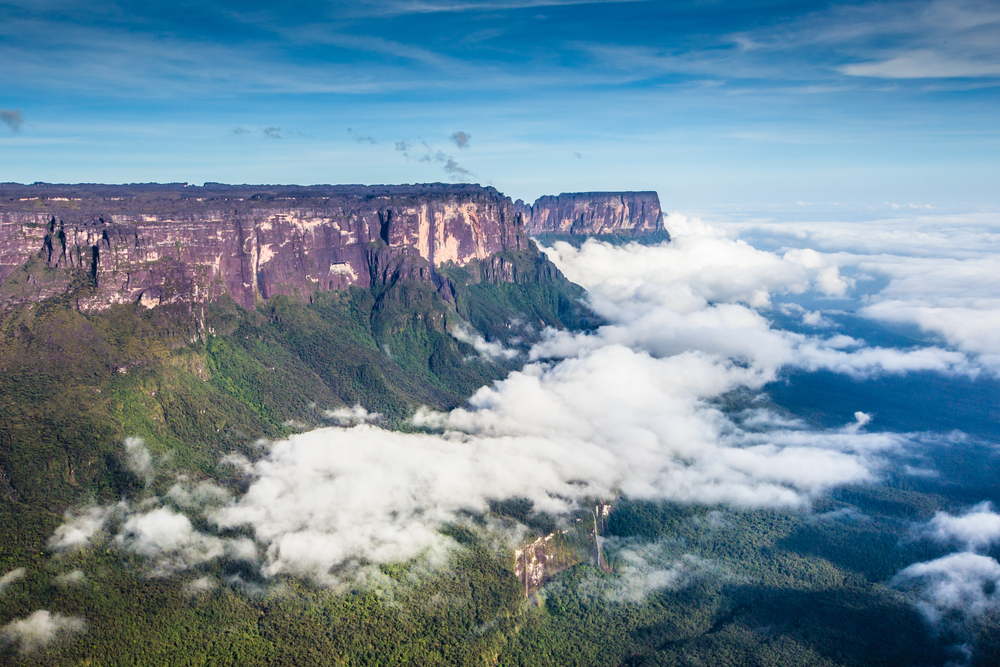
Mount Roraima is a unique flat-topped mountain located in the Gran Sabana region of Venezuela. It stands at 9,094 feet and has an almost otherworldly appearance, with steep cliffs and a large, flat summit. The area is often shrouded in mist, giving it a mysterious feel. It is a destination for adventurous travelers who are ready for a challenging trek and a chance to experience untouched landscapes.
Known for its diverse ecosystem, the summit is home to unique plant and animal species that cannot be found anywhere else on Earth. Mount Roraima served as inspiration for Sir Arthur Conan Doyle’s novel The Lost World. Reaching the top of the mountain requires a multi-day trek, but the reward is breathtaking views and an incredible sense of accomplishment. Its remoteness and distinct appearance make it one of the most fascinating landmarks in the world.
Spotted Lake (Khiluk), Canada
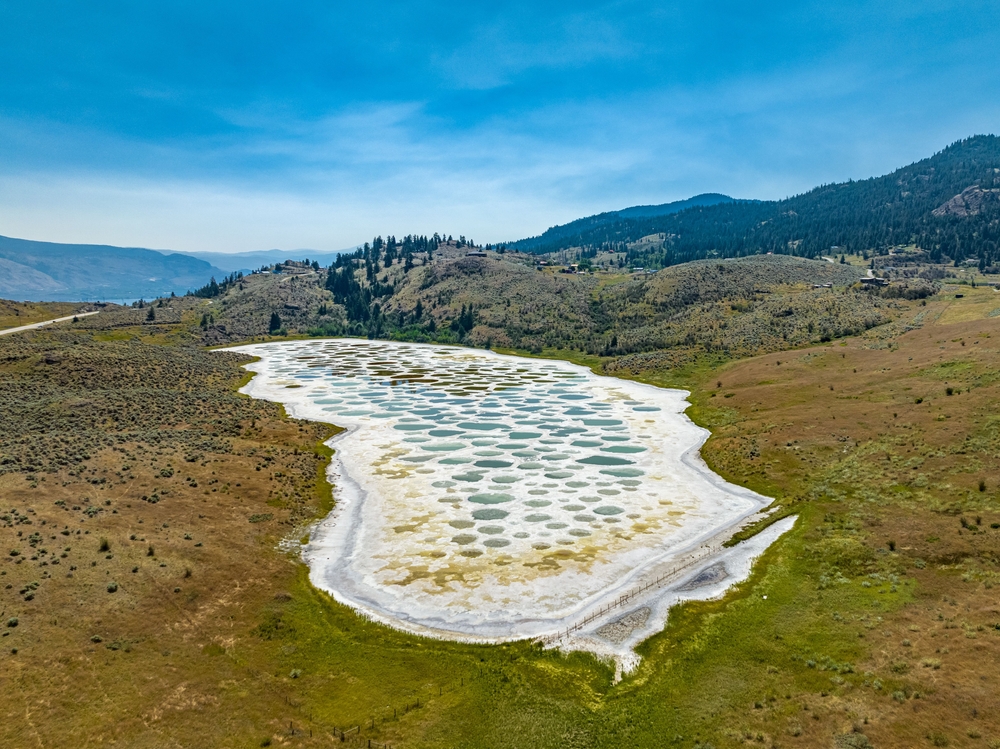
Spotted Lake, located in British Columbia, is a natural wonder that draws attention due to its unusual appearance. During the summer, the lake evaporates, leaving behind small, vibrant, circular patches that vary in color from green to yellow. The minerals in the water, including magnesium, calcium, and sodium sulfate, create this beautiful spotted effect. It is said to be sacred to the First Nations people, who have used the lake’s water for healing purposes.
The lake is considered one of the most mineral-rich bodies of water in the world. Its appearance changes throughout the year, with the spots becoming more prominent during the dry season. Spotted Lake is a protected site, and while visitors can view it from a distance, swimming in it is prohibited. This unique natural landmark offers a glimpse into both the beauty and mystery of nature’s creations.
Ayers Rock (Uluru), Australia
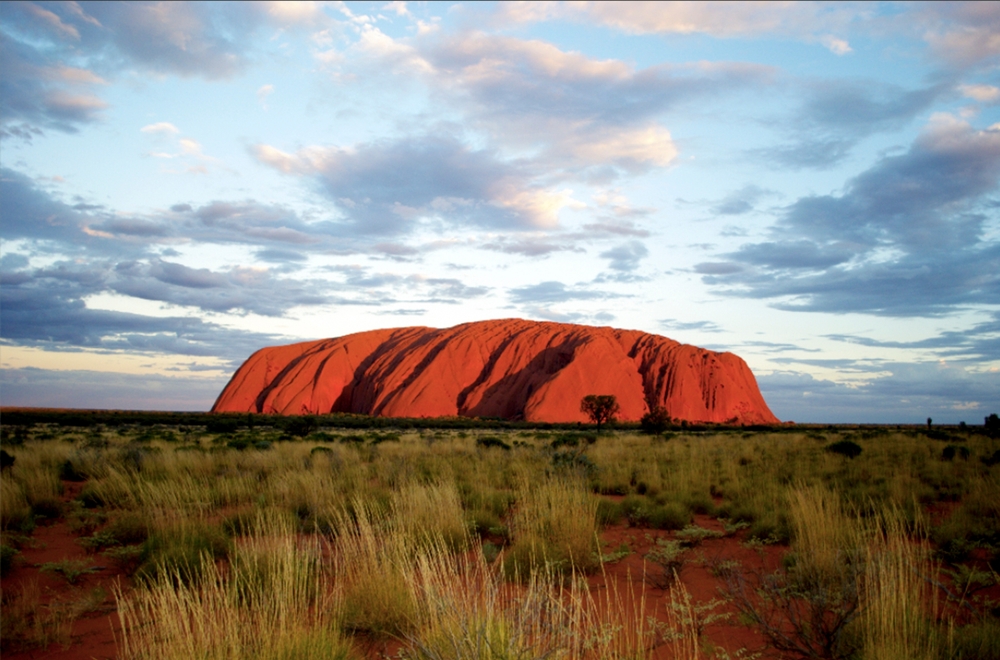
Uluru, also known as Ayers Rock, is a massive sandstone monolith located in the heart of the Australian Outback. This iconic landmark stands 1,142 feet tall and is around 5 miles in circumference. Its vibrant red hue shifts with the changing light of day, making it a captivating sight at sunrise and sunset. Uluru is sacred to the indigenous Anangu people, who have lived in the area for thousands of years.
The surrounding Uluru-Kata Tjuta National Park is home to diverse wildlife and offers opportunities for hiking and exploring Aboriginal culture. While the rock is a popular tourist destination, visitors are encouraged to respect the cultural significance of the site. Climbing the rock was once allowed but is now prohibited to preserve its sanctity. Uluru remains a powerful symbol of Australia’s natural and cultural heritage.
The Great Blue Hole, Belize
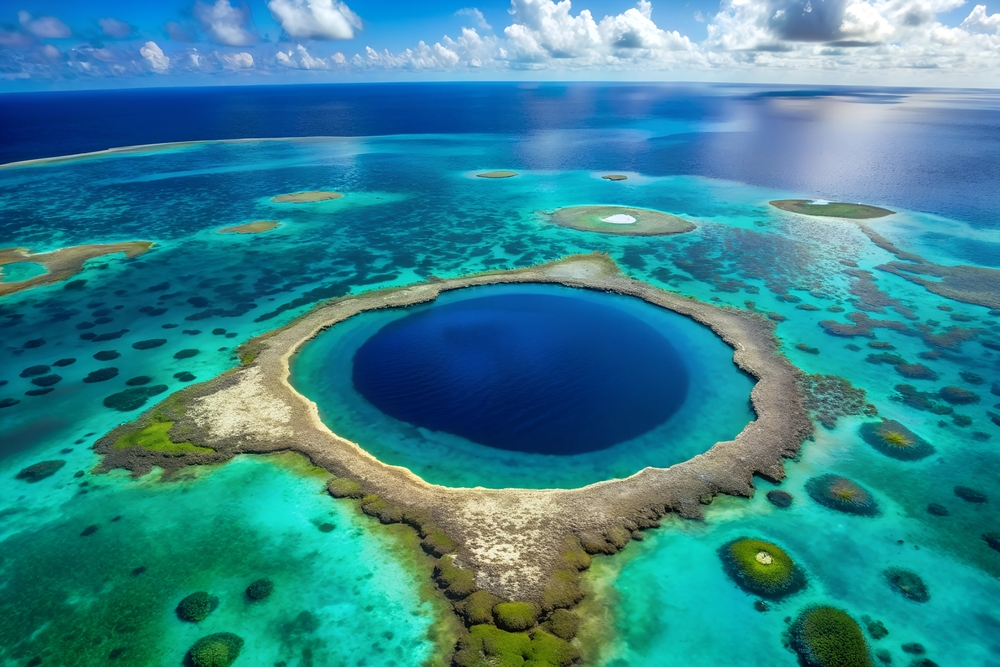
The Great Blue Hole is a giant underwater sinkhole off the coast of Belize, measuring over 1,000 feet in diameter and 400 feet deep. It is part of the Belize Barrier Reef, a UNESCO World Heritage site. This natural wonder is famous for its vivid blue color, which contrasts with the surrounding turquoise waters. The Great Blue Hole is a popular spot for divers, offering clear visibility and the chance to explore an array of marine life.
The sinkhole formed thousands of years ago during the Ice Age, when the area was above sea level. Over time, the roof of the cavern collapsed, creating the hole that we see today. It is home to stalactites, stalagmites, and a variety of sea creatures such as nurse sharks, reef sharks, and numerous fish species. The Great Blue Hole is not only a spectacular landmark but also an important location for marine research.
The Door to Hell, Turkmenistan
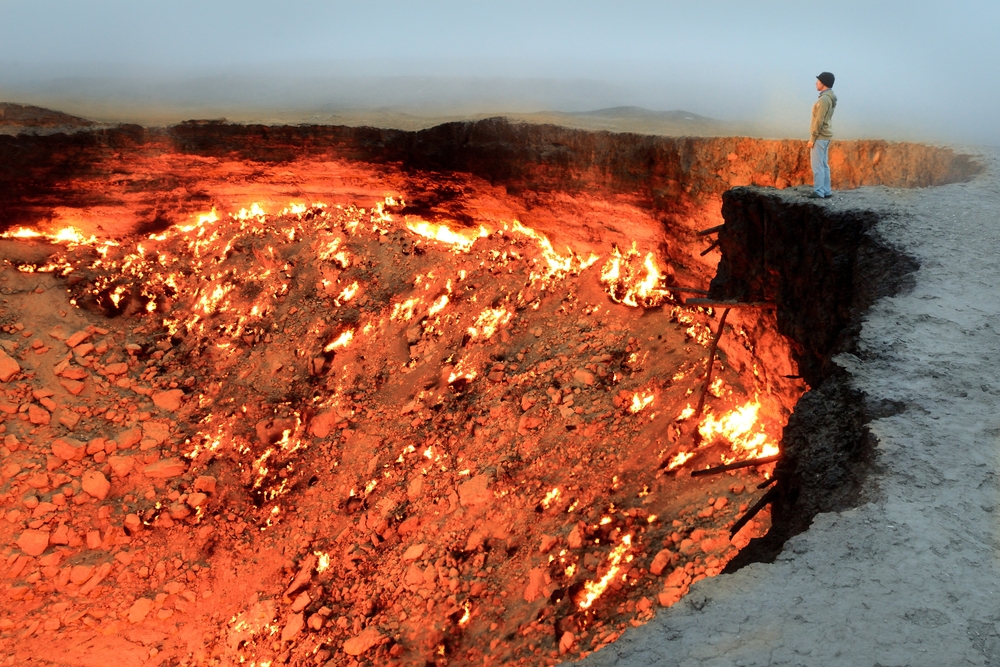
The Door to Hell, located in the Karakum Desert of Turkmenistan, is a natural gas field that has been burning continuously since 1971. The crater was created when a drilling rig collapsed, and scientists set the fire to prevent the spread of methane gas. The resulting fiery pit, which measures about 230 feet in diameter, is a striking sight. It glows brightly at night, earning it the eerie nickname Door to Hell.
Although it was originally intended to burn out in a few weeks, the fire continues to burn, creating a mesmerizing and haunting landscape. Visitors can approach the crater at a safe distance to witness the intense flames. The Door to Hell has become a symbol of both human error and the power of nature. It is a fascinating landmark that attracts curious travelers and adventurous souls from all over the world.
The Boiling River, Peruvian Amazon
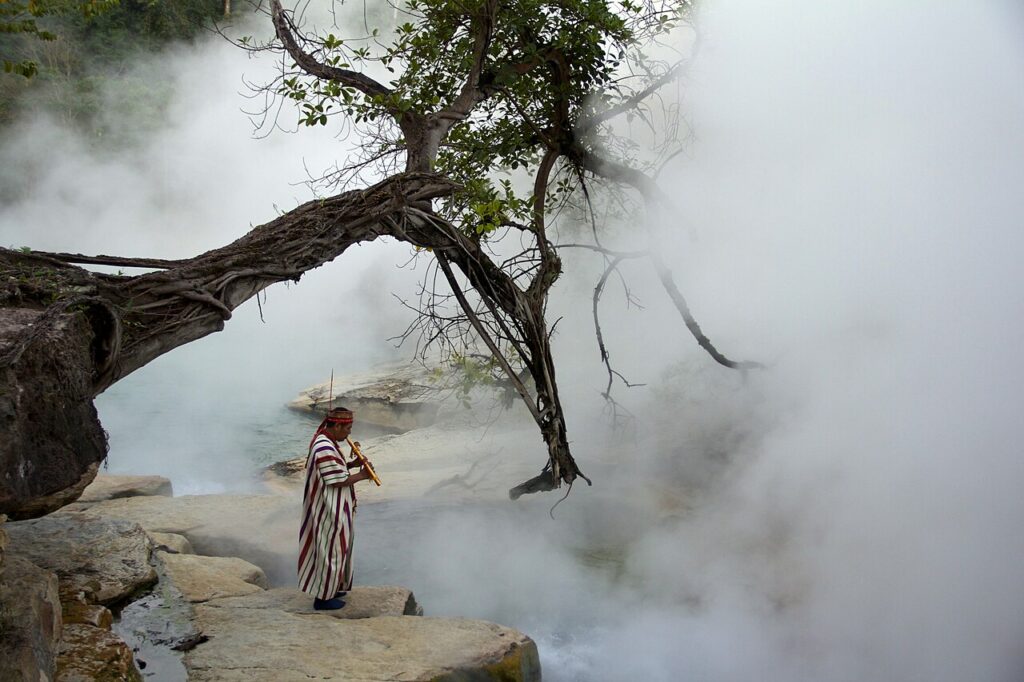
The Boiling River, located in the Peruvian Amazon, is a natural hot spring that flows at temperatures of up to 200 degrees F. The river, known as Shanay-Timpishka, runs through the dense rainforest and is heated by geothermal activity deep beneath the Earth’s surface. The river’s high temperature can scald, and its waters are too hot for human swimming. Its unique feature makes it an incredibly rare geological wonder.
Scientists believe that the heat is caused by volcanic activity in the region, making it one of the few places on Earth where a river runs at such high temperatures. Despite its danger, the river’s beauty and mystique draw adventurers and researchers alike. The surrounding forest and wildlife add to the river’s allure, making it a must-see landmark for those visiting the region. The Boiling River is still largely unexplored, offering an untouched glimpse into the wonders of nature.
The Wave, Arizona, USA
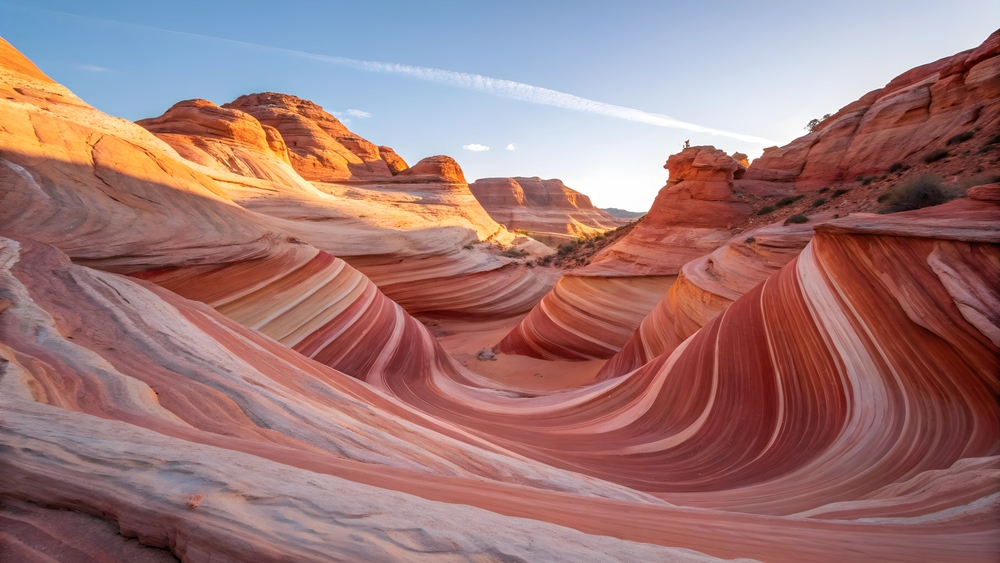
The Wave is a breathtaking sandstone rock formation located in Arizona’s Paria Canyon-Vermilion Cliffs Wilderness. It features undulating, wave-like patterns of red and orange rock, formed by millions of years of erosion. The rock formation is about 5 miles from the nearest trailhead, requiring a permit to visit. The striking, curved lines of the formation give it the appearance of an ocean wave frozen in time.
The Wave is a photographer’s dream, offering unique opportunities for capturing its mesmerizing curves and vibrant colors. The hike to the formation is relatively strenuous and requires preparation, as the desert environment can be harsh. Despite its beauty, the area is carefully protected to preserve the fragile landscape. The Wave continues to be one of the most sought-after landmarks in the American Southwest.
The Singing Sand Dunes, China
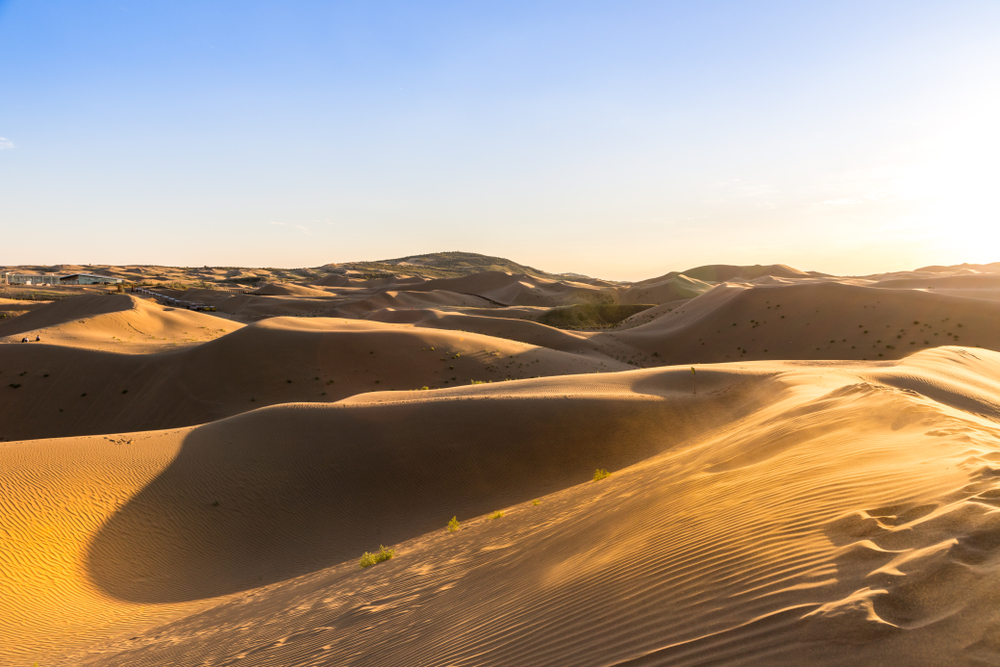
The Singing Sand Dunes, located in the Tengger Desert of China, are known for the musical sound they produce when the wind blows across them. The dunes can reach heights of over 500 feet, and when disturbed, the sand creates a resonating, almost eerie hum. This phenomenon is caused by the movement of sand particles rubbing against each other, creating vibrations that produce sound waves. The Singing Sand Dunes are one of the most mysterious and captivating natural landmarks in China.
The dunes’ musical qualities have been known to locals for centuries, and the area is surrounded by fascinating desert landscapes. Visitors can walk along the sand, and the sound of the dunes can be heard from miles away. The dunes are located near the ancient city of Dunhuang, making them an important historical and cultural site. The combination of natural beauty and the unique sound of the dunes makes this a must-see destination.
Cappadocia, Turkey
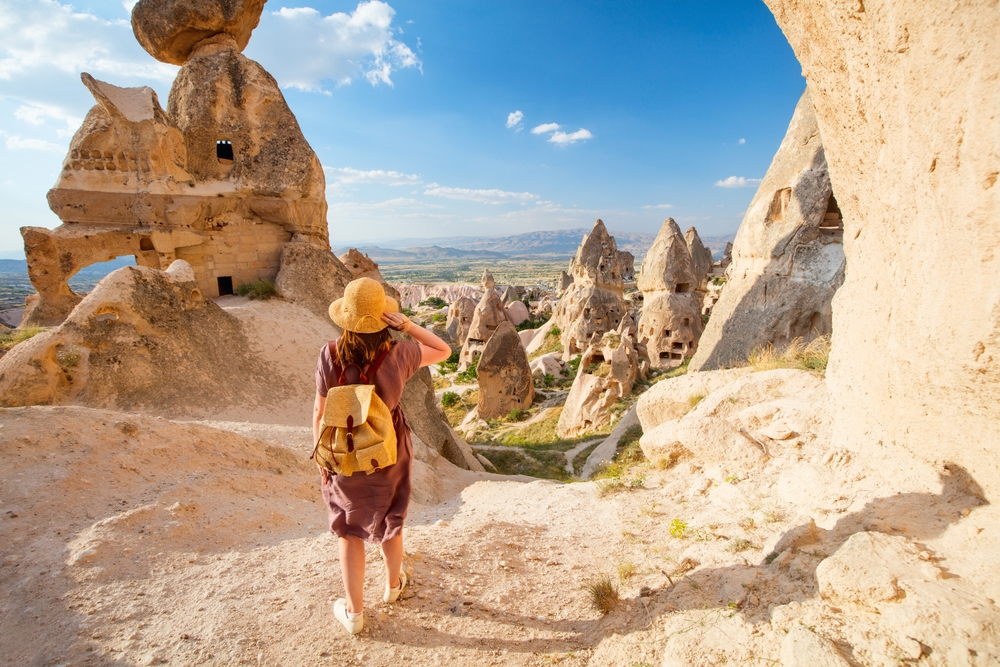
Cappadocia is a region in central Turkey known for its surreal landscape of fairy chimneys, ancient cave dwellings, and rock formations. Over thousands of years, volcanic eruptions and erosion have shaped the soft volcanic rock into towering spires. The region is famous for its hot air balloon rides, which provide stunning views of the unusual landscape. Visitors can explore the caves, many of which have been carved into the rock to create churches, homes, and underground cities.
The unique geological formations and historical significance make Cappadocia a top destination for travelers seeking something different. The region’s history dates back to ancient times, and many of the cave churches still contain well-preserved frescoes. The surrounding valleys offer hiking opportunities, where visitors can immerse themselves in the natural beauty of the area. Cappadocia’s otherworldly landscape continues to captivate visitors from all corners of the globe.
Stone Forest, China
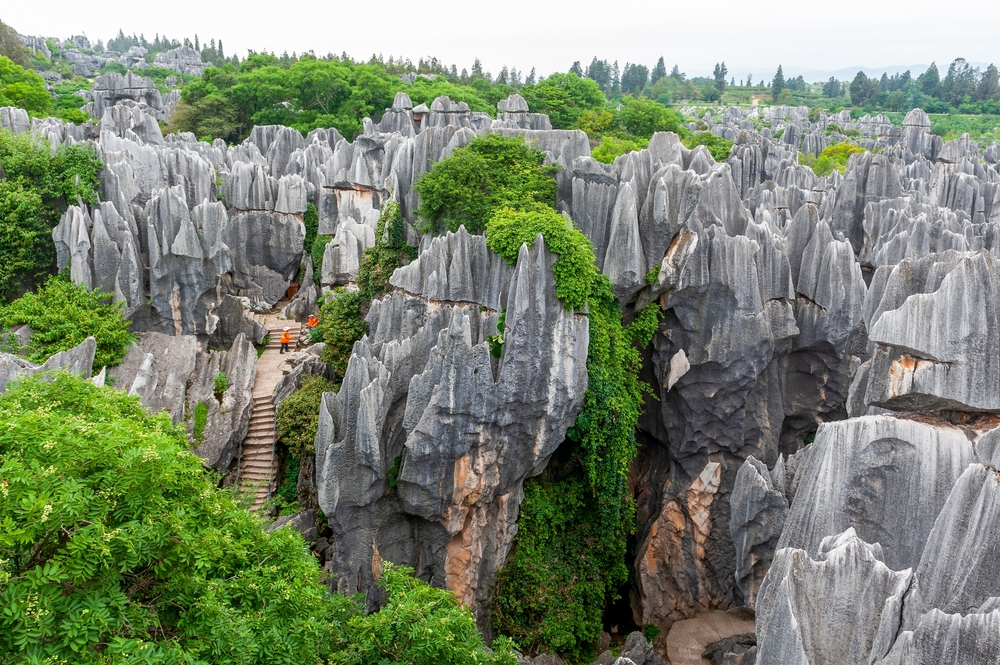
The Stone Forest, or Shilin, is located in the Yunnan Province of China and is a remarkable natural landscape made up of limestone formations. The forest looks like a collection of jagged stone peaks rising from the ground, creating the appearance of a petrified forest. These formations have been shaped over millions of years by erosion, and their surreal shapes give them an almost mystical quality. The Stone Forest is a UNESCO World Heritage site and is one of China’s most famous natural landmarks.
Visitors to the Stone Forest can explore winding paths and pathways that lead through the towering rock formations. The area is steeped in local folklore, with stories about the origins of the formations. The Stone Forest is a popular destination for both tourists and photographers who want to capture its unique beauty. Its stunning, otherworldly appearance makes it a must-see landmark for those traveling through China.
Mount Erebus, Antarctica

Mount Erebus is an active volcano located on Ross Island in Antarctica. It is the southernmost active volcano on Earth, with a permanent lava lake at its summit. The volcano has been continuously erupting since 1972, making it a fascinating site for scientists and adventurers. Despite its extreme location and harsh weather conditions, Mount Erebus remains an important landmark for those studying volcanic activity in the polar regions.
The volcano’s lava lake, which emits constant plumes of smoke, is a unique and striking feature in the frozen landscape. Its remote location and difficult access make it a rare site for visitors, but the mountain’s significance cannot be overstated. Mount Erebus is a key site for geological research, providing valuable insights into volcanic activity. Its surreal combination of fire and ice is one of the most extraordinary landmarks on the planet.
Socotra Island, Yemen
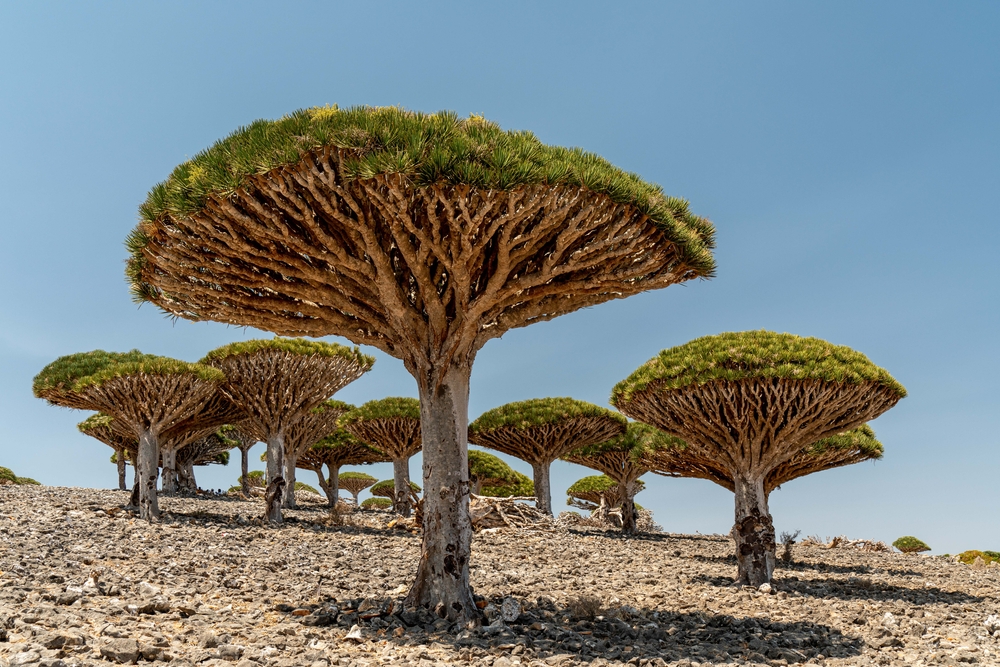
Socotra Island is an isolated island in the Arabian Sea, belonging to Yemen. The island is known for its unusual and endemic flora, including the dragon blood tree, which has a distinct umbrella-like appearance. The island’s unique ecosystem, combined with its isolation, has earned it the nickname the most alien-looking place on Earth.” Socotra is a UNESCO World Heritage site and is home to a variety of species found nowhere else on the planet.
Socotra’s stunning landscapes include white sandy beaches, limestone mountains, and pristine coral reefs. The island’s unique biodiversity and geological features make it a must-visit for those seeking something truly one-of-a-kind. Despite its beauty, Socotra remains relatively undiscovered by mass tourism, preserving its natural splendor. It is a destination for travelers looking to experience a place that feels untouched by time.
The Nazca Lines, Peru
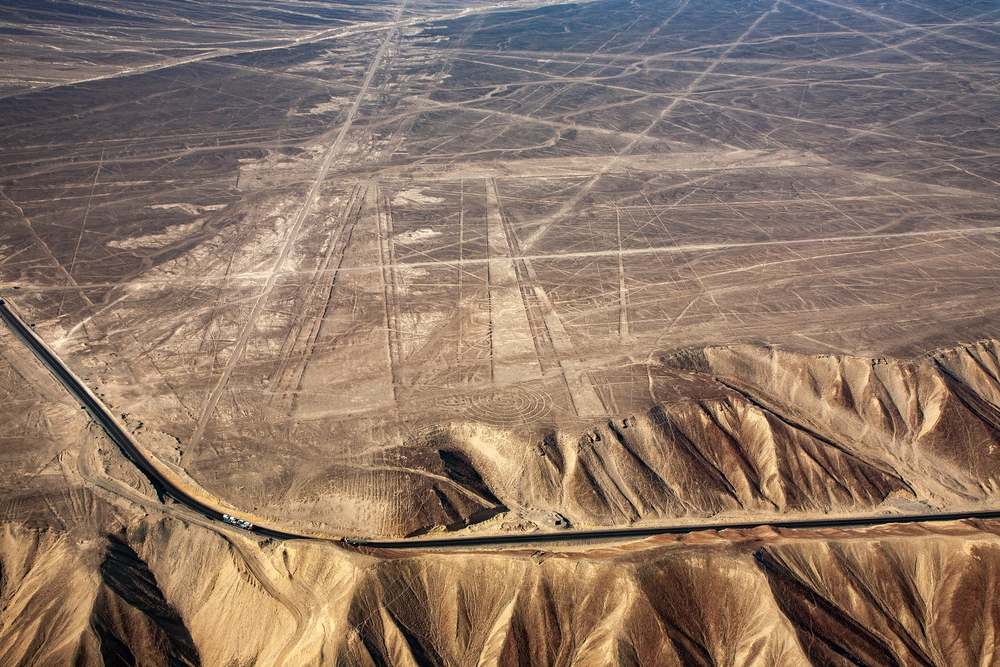
The Nazca Lines are a series of massive geoglyphs located in the desert of southern Peru. These lines, some of which form intricate shapes of animals and plants, were created by the ancient Nazca culture between 500 BCE and 500 CE. The designs can only be fully appreciated from the air, and their purpose remains a mystery, with theories ranging from astronomical calendars to religious rituals. The Nazca Lines are a UNESCO World Heritage site and attract visitors from around the world.
The lines are most visible from the sky, making airplane tours the most popular way to view them. The immense scale and precision of the designs have puzzled historians and researchers for years. Despite their age, the lines have been remarkably well-preserved due to the dry climate of the region. The Nazca Lines remain one of the most fascinating and enigmatic landmarks in the world.
Every landmark has a story to tell, and some of the most fascinating ones remain hidden from mainstream travel guides. These unique destinations give travelers a chance to discover the lesser-known beauty of the world. Seek out these hidden gems and create lasting memories along the way.
This article originally appeared on Avocadu.
